In 1936, the Victorian Government purchased 140 acres for the establishment of a factory in Lorimer Street and an
airstrip extending from where the AMRL main
gate now stands.
The CAC built 1683 aircraft from this Lorimer Street factory and flew them out from this
airstrip, the fourth to be built in the Fishermen's Bend area.
The Commonwealth Aircraft Corporation is the best known of the Australian aircraft manufacturers of the Word War II era and post war era. The aircraft began as a private corporation founded by
Lawrence Wackett who had been a Captain with the Australian Flying Corps and known for his engineering ingenuity. After World War I, Wackett had begun manufacturing and designing Civil Aircraft.
In the 30's CAC took up the license for the North American NA-16, or the Texan or Harvard as it was known.

Department of Aircraft Production (DAP) Headquarters, Fishermen's Bend, 1935

CAC Aerial view
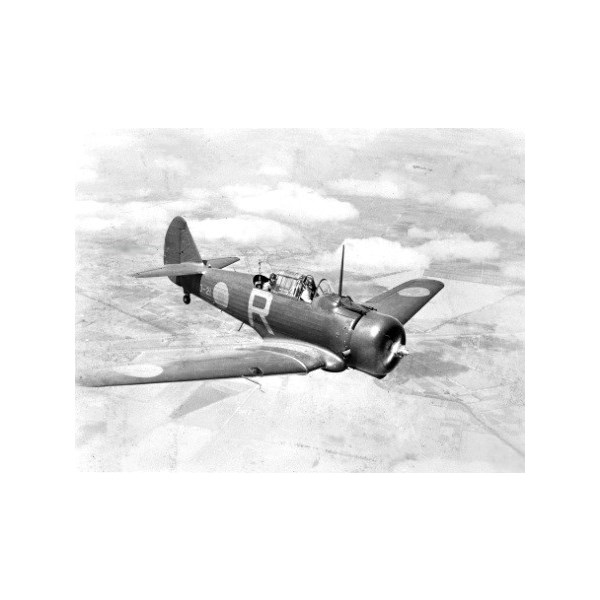
CAC Wirraway
This was to become the CAC Wirraway, which served Australia in training and combat including a kill over a Zero when a 4 Sqn RAAF Wirraway shot down a Zero over New Guinea. CAC designed the training aircraft the Wackett and then the stop gap fighter, the Boomerang which was the only indiginously designed and built aircraft to see combat in WWII. The factory having a good working relationship with North American also produced the Mustang in later years.
Other Australian manufacturers such as DAP, GAF and DeHavilland Australia built aircraft in Australia for the RAAF. The best known of these is DAP who produced the Beaufighters which became known as "Whispering Death" to the Japanese. DAP also produced the Beaufort, and many more licensed aircraft.
DAP was to become GAF which manufactured the Lincoln post war that saw service with 1 Sqn in Malaya. GAF was later to produce the first Australian manned jet, the Pika, the jet target tug Jindivik which is still in export and the Nomad. DeHavilland Australia produced the huge amounts of Tiger Moths that were used for training in Australia as
well as the Mosquito for Pacific service.

CA-4 Woomera prototype A23-1001
During the war CAC produced two interesting prototypes which unfortunately never made it into production. The
Woomera which was a three seater medium bomber that had remotely operated turrets in the rear engine nacelles. The second was the interceptor, the CA-15 or Kangaroo. A 721 km/h fast fighter with a range of 4000 km's. After the war CAC produced the CAC Sabre, one of the ultimate Sabres of the type. With a more powerful Avon turbojet and twin 30mm cannons the frame was 60% redesigned.
During the Second World War, the manufacturing capabilities of Australia's largest companies were tuned to building components and assembling items for the defence of Australia and our Allies. Some 600 companies contributed to the manufacturing and assembly of the DAP Beaufort for the Royal Australian Air Force.
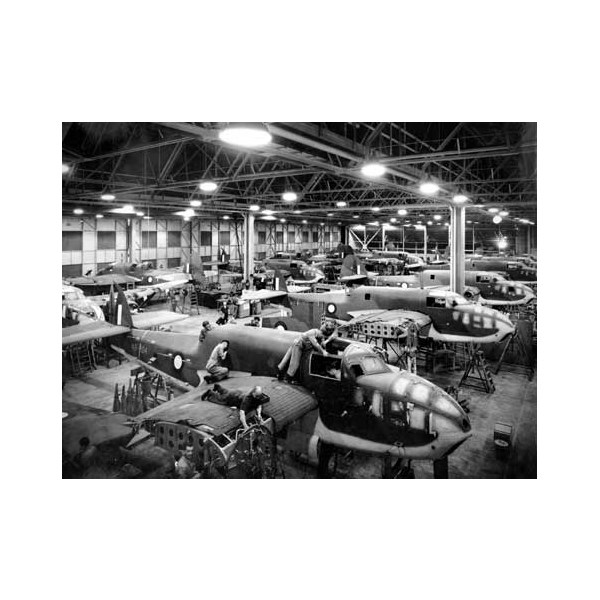
Department of Aircraft Production at Mascot
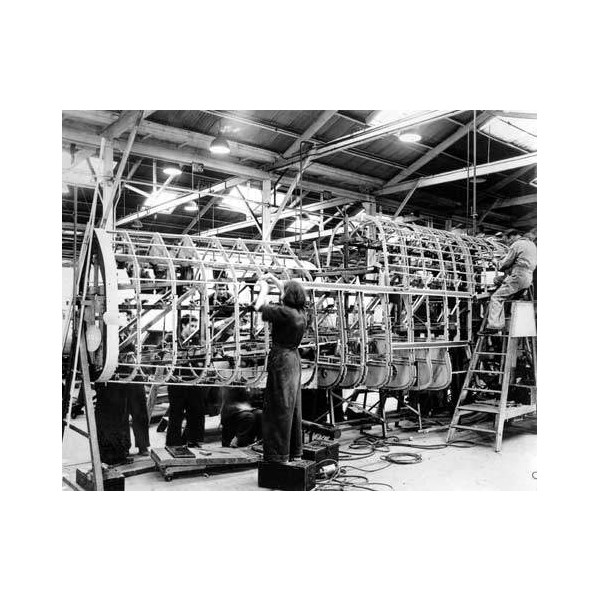
Department of Aircraft Production Fisherman's Bend, Victoria
The Bristol Beaufort Bomber included parts manufactured by 600 firms separated by thousands of kilometres, over three Australian states. The parts were assembled into larger sections of the plane at the railway workshops at Chullora NSW, Newport Vic, and Islington SA. Each of these workshops specialised in different sections of the plane. These larger parts were then turned into finished planes at the two main assembly workshops of the Department of Aircraft Production at Fishermen’s Bend Vic and Mascot NSW.
The Department of Aircraft Production’s factory at the Chullora Workshops made the front fuselage (including the seats of pilot, observer and navigator) and associated control equipment wiring, the retractable undercarriage, the stern frame, the engine nacelle fairing, and engine bulkhead panels. This image shows the front fuselages being fitted out on 6 April 1942. Eveleigh Workshops constructed wooden, leather or fabric covered parts
The Major Players:
State Rail Workshops - Newport, Victoria - Rear fuselage, Tail plane, Elevators, Fin, Rudder
State Rail Workshops - Chullora, New South Wales - Front Fuselage, Stern frame, Undercarriage, Nacelle structure, Observer's screen and Pilot's top structure (Glass and frame).
State Rail Workshops - Islington, South Australia - Centre main plane, Port and starboard main planes, Bomb cell floor.
National Motor Springs - New South Wales - Oleo Legs
Department of Aircraft Production (run by General Motors Holden) - Fisherman's Bend, Victoria - Centre main planes, Final asembly of aircraft
Department of Aircraft Production (run by General Motors Holden) - Mascot, New South Wales - Final assembly of aircraft
General Motors Holden - Woodville, South Australia - Wing leading and trailing edges, Wing tank doors, Wing ribs, Wing tips, Tail assembly, Flaps
General Motors Holden - Fairfield, Victoria - Gun Turret
Commonwealth Aircraft Corporation - Lidcombe, New South Wales - Pratt & Whitney R-1830 "Twin-Wasp" engines (2-stage).
De Havilland Australia -
Sydney, New South Wales - Curtiss-Electric propellers

Factory at Chullora, NSW
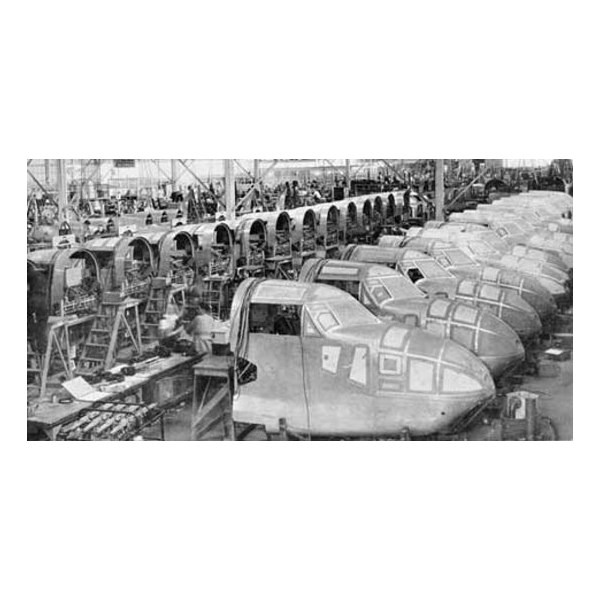
State Railway Workshops Chullora, New South Wales
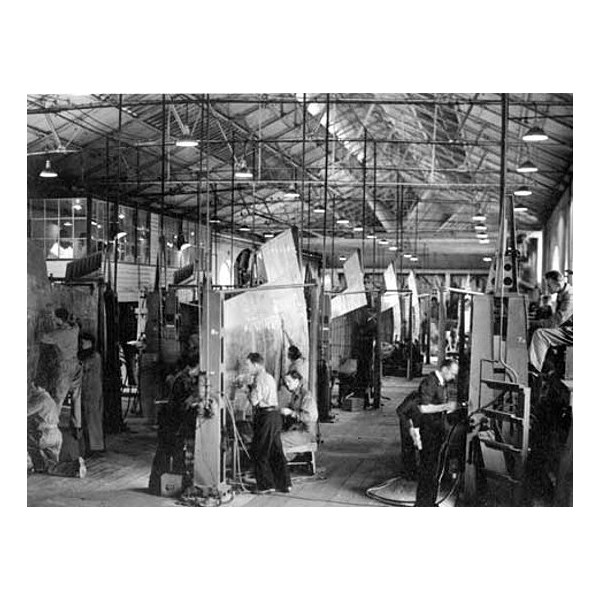
State Railway Workshops Islington, South Australia
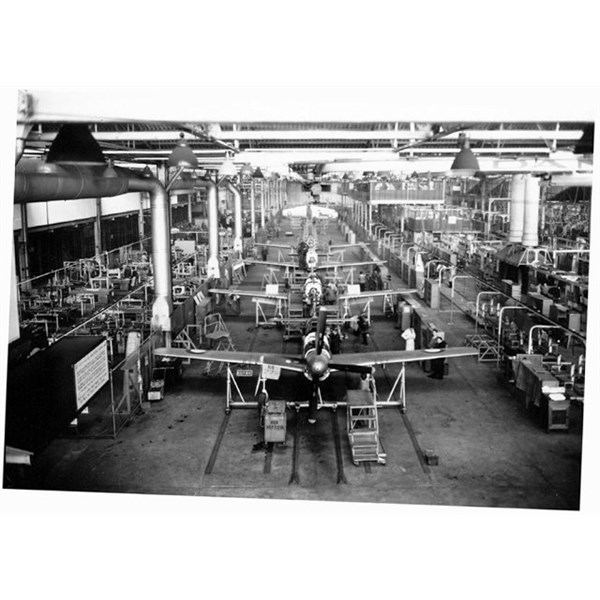
Mustang construction line
It arose from the initiative of Essington Lewis, who was at the time the Chief General Manager of BHP, and who formed a syndicate of BHP,
Broken Hill Associated Smelters and G.M.H. to undertake a study leading to the establishment of military aircraft and engine manufacturing facilities in Australia. These companies were later joined by I.C.I., Electrolytic Zinc and Orient Steam Navigation Company.
The nucleus of the newly formed company was provided by L. J. Wackett's team, operating at the Tugan Aircraft premises in
Sydney. This company was taken over by CAC and Wackett became its first manager. A factory was constructed at Fishermen's Bend in
Melbourne and Wackett began to operate from the new premises in September, 1937. In order to enable rapid local production, a licenced design was adopted, both for the airframe (the North American NA33, later known as the Wirraway), and for the engine (Pratt and Whitney Wasp).
Whilst this is a historical review, in these days of rampant
Canberra bureaucracy it is interesting to note the speed with which it was possible to operate when there were no government departments set up to 'assist' industry. Thus the first order was received in January 1937, some nine months before the factory was completed (this took less than a year) and the first aircraft and its engine were completed in March 1939, some 18 months after the factory started operating. A total of 755 Wirraways were built in subsequent war years.
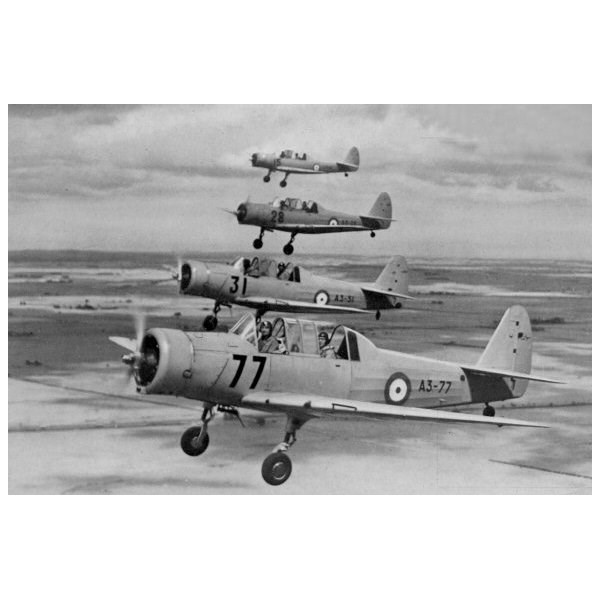
CAC CA6 Wackett Trainer
In 1938 a requirement for an intermediary trainer for the R.A.A.F. arose and the Wackett team designed and built the Wackett trainer, which first flew in October 1939. It was subsequently re-engined and some 200 production trainers were built, with deliveries occurring between May 1941 and April 1942.
An interesting and innovative CAC design was the
Woomera three seater reconnaissance bomber. Engineering work on this aircraft commenced in April 1940 and the first flight took place in September 1941. The
Woomera had a number of ingenious features incorporated, the most interesting being the remotely controlled, power-operated gun turrets at the rear of each engine nacelle. Due to a change of government policy, this type was not ordered into production.
In order to counteract the supremacy of the Japanese Air Force in 1942, the CAC design staff employed the most powerful engine then available, the 1200 h.p. twin Wasp to power a new design of a small fighter. To save time, many existing Wirraway components were incorporated in the new design.
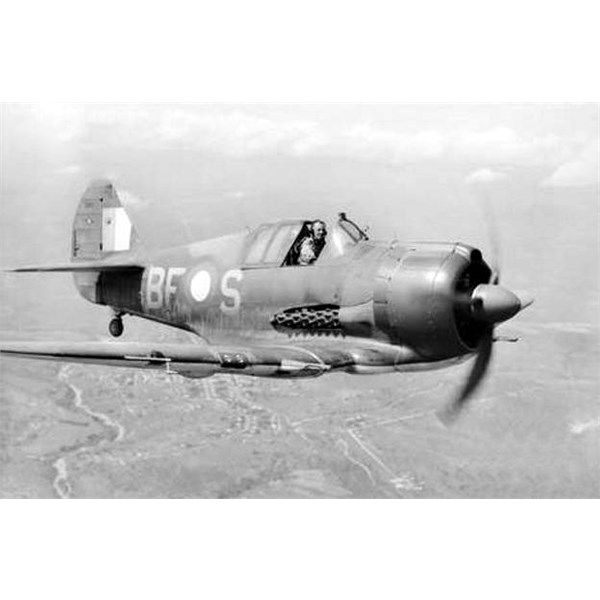
CAC Boomerang from No. 5 Squadron RAAF
The new aircraft, named the Boomerang, first flew at the end of May 1942, precisely 14 weeks after rough drafts had been approved. 105 aircraft of this type were ordered off the drawing board and first production aircraft were delivered to the R.A.A.F. by September 1942. Further versions of the Boomerang had supercharged engines and a total of 250 aircraft of both types were built.
It was originally designed for a U.S. engine, the 2,300 h.p. Pratt and Whitney R-2800, but this engine was not made available and the aircraft was re-designed in 1945 to accept the Rolls Royce Griffon engine. The first flight occurred in March 1946. Whilst the advent of jet fighters prevented the CA-15 to be ordered for production, it was, for its time, a remarkable performance aircraft and was definitely a state-of-the-art development.
We have to go back to 1939 again, to look at the third major Australian initiative in aviation. The spectre of the coming war caused the Commonwealth Government to think about setting up additional facilities specifically for the production of war planes. The Department of Aircraft Production was established and its production branch, known as the Beaufort Division, was set up at Fishermen's Bend, next to CAC. The Beaufort Division, under the control of
John (later Sir
John) Storey, one of the most prominent industrialists of that time, commenced operations in September, 1939 with an empty office and in May 1941 produced its first licence-built Beaufort bomber.

Bristol Beauforts 217 Squadron in flight
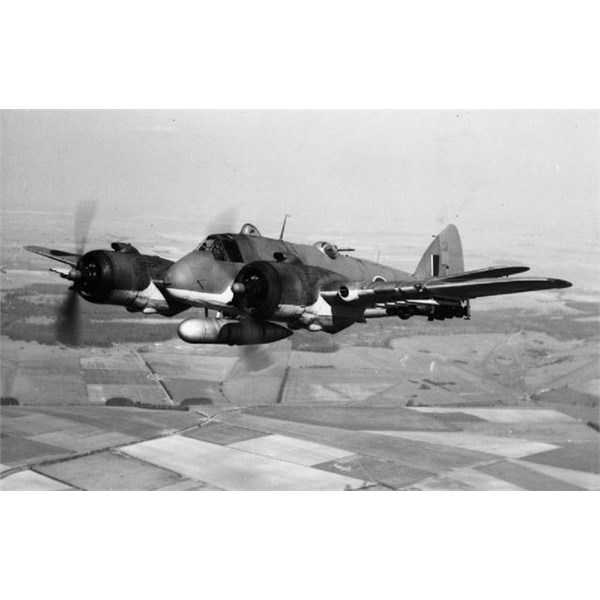
Beaufighter of No. 455 Squadron RAAF, about to depart from Langham, Norfolk, on an anti-shipping strike.

RAAF, South-West Pacific, Apr 1944. attack photo of Japanese oil tanker off Tenau, Timor. Attacked by Beaufighters
The innovations needed to put this aircraft into, and maintain in production, consisted of the replacement of the unobtainable British engine, the Taurus, with the locally produced twin-row Wasp engines. Local sources of supply had to be arranged for many sub-components which were originally to be imported. By August 1944 when its production ceased, 700 aircraft of this type had been delivered. Towards the end of 1943, the licensed production of the fighter-bomber, the Beaufighter was put in hand and the first deliveries of the latter type commenced in May 1944.
The most remarkable feature of the wartime history of the Australian aircraft industry was its impressive growth. From a handful of people in 1937 and without a developed base of sub-contractors, it grew to 5,000 in June 1940 and to a peak of some 44,000 people in 1944 operating in four main factories and several annexes. Sub-contractors accounted for another 10,000 people. This industry delivered some 3,500 aircraft of all types to the R.A.A.F. and, at the end of the war, was capable of designing and manufacturing aircraft equal to the best in the world.
.